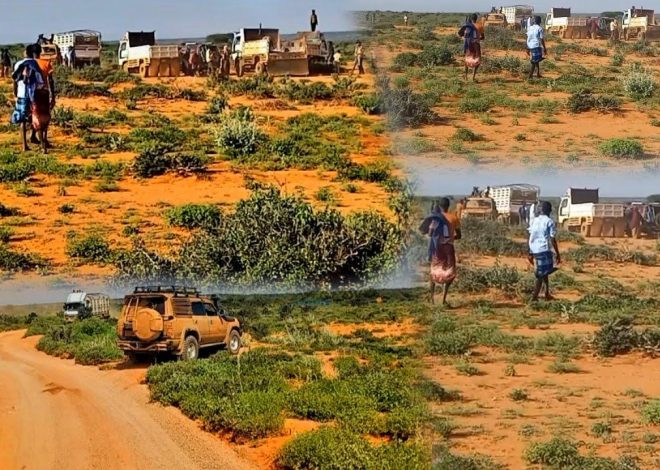Shabelle farmers harness water from local dam to combat drought
Farmers in southern Somalia’s Lower and Middle Shabelle breadbasket regions have teamed up in a joint effort to access water from a nearby dam to keep their crops alive during the drought.
The farmers hired 50 labourers to control manually the floodgates at Jameeco dam in Balad district, so that water flows to irrigate their farms. The farmers in Middle Shabelle receive water for 10 days, followed by those in Lower Shabelle for the next 10 days, in an ongoing cycle.
Mohamed Ali, who owns a three-hectare farm in Danid village in Balad, has irrigated twice since the floodgates were opened on 25 December. He said the dam water was supplied at a critical moment for him as the river water levels are very low. He used to pump river water on to his farm using a small generator.
“I planted my farm on different dates. At the moment, the maize is nearing harvest. I planted the sesame not long ago, and I am harvesting the tomatoes,” he said.
Mohamed, 53, a father of two, was unable to harvest anything in 2021, as river floods washed away his crops three times in a row. He incurred $500 in debt for the purchase of seeds and hiring the tractor to plant. As the farm is his only source of income, he was forced to depend on support from his relatives last year. This year, with irrigation from the dam, he hopes to harvest and repay what he owes.
The farmers formed their own committee to manage the initiative. Mohamed Omar Ali, a committee member, said the dam water is of great importance to them and came at a time of need as the river has dried up in places.
He explained that the 50 labourers, working in shifts, are paid eight dollars each for the days they work. The money for their pay is contributed by the farmers owning larger areas of land.
According to Mohamed, this is only the third time in the last 30 years that farmers have used the dam to water their farms. The last occasions were in 2016 and 2018, but then only the few farms close to the dam received water. This time, more than 600 farms in the two Shabelle regions are getting water channelled by a canal from the dam.
The operation is costly as the labourers spend the whole day and night camped out at the dam controlling the water flow from two floodgates that are opened and closed manually using a wheel. There is a risk of flooding the farms downstream if too much water is released at once.
The 42-kilometre Jameeco dam was built in 1975 by the Somali government to hold back flood waters form the river Shabelle. The canal was also built around the same period.
Ali Hassan Mohamed, 60, who owns one hectare in Afgoye district, told Radio Ergo that when he saw the river drying up, he thought he would not be able to plant this season. However, his plans changed when he witnessed other farmers in his area using the dam water.
He has planted maize and is waiting for it to grow. “I have watered the farm twice now and am waiting for the third time, then I hope I will harvest,” he said.
Ali, father of a family of eight, planted only once last year because there was a risk of flooding destroying his crops and leading him into financial losses.




